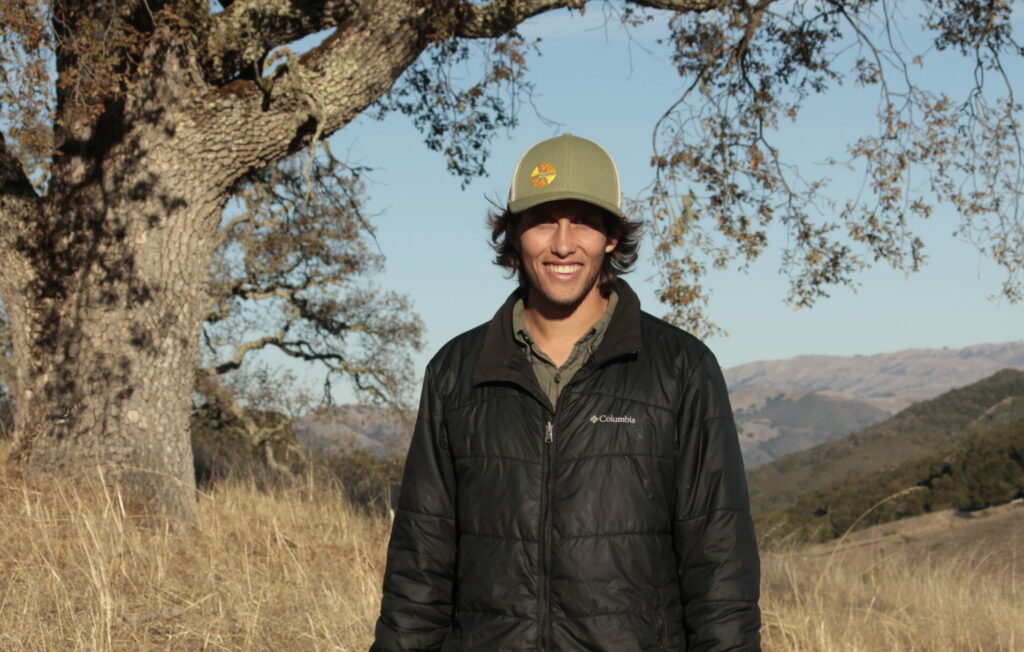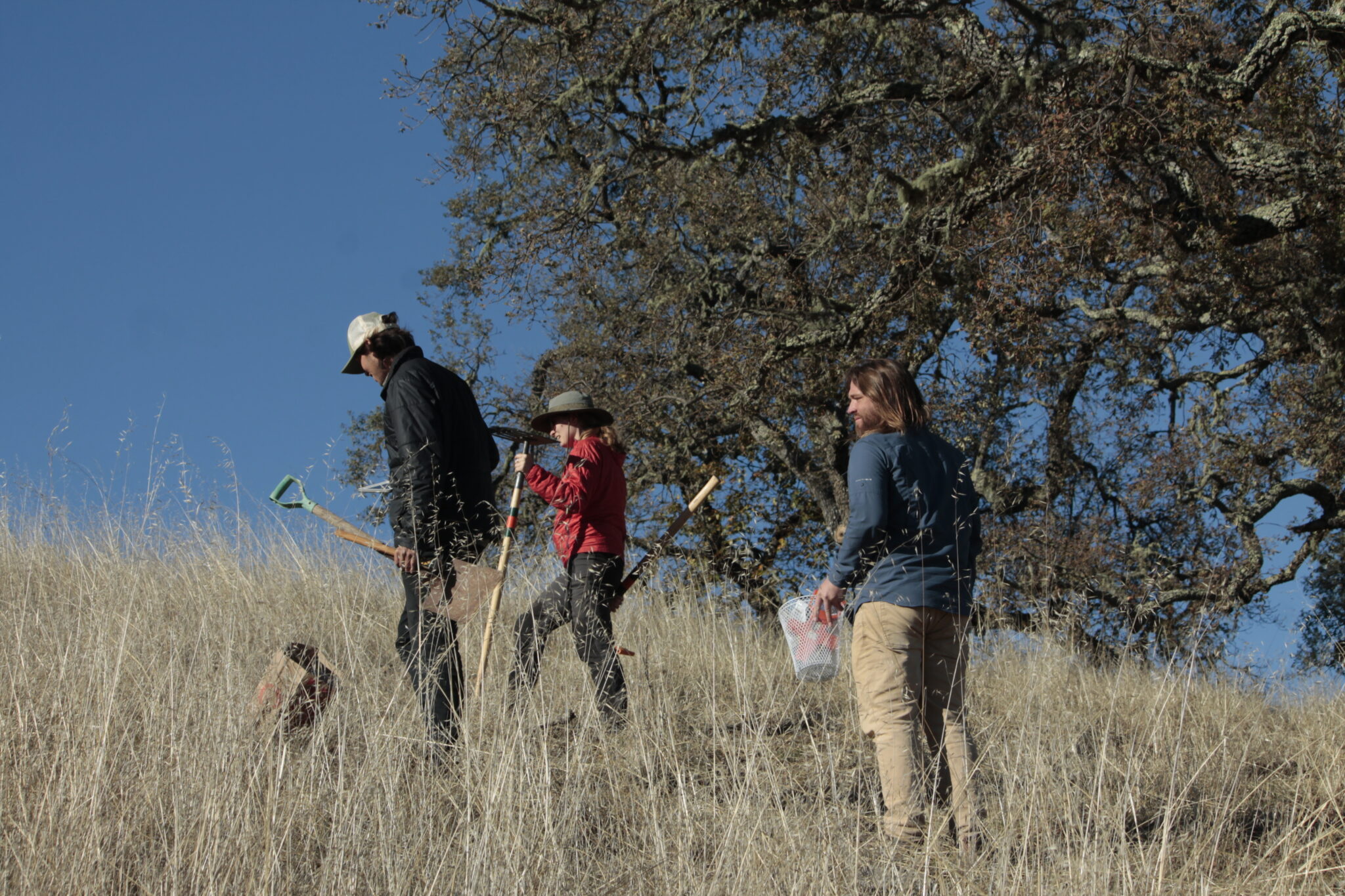CSUMB Undergraduate Researcher Mario Coronado Cartmell establishes study plots on The Preserve.

CSUMB Undergraduate Researcher Studies Valley Oak Regeneration on The Preserve
February 7, 2023
By Alix Soliman, Communications & Outreach Coordinator
Across California, valley oaks (Quercus lobata) are struggling to establish future generations. Agriculture and urban development have drastically reduced valley oak woodland coverage across the state and especially in the Central Valley, where nearly 90 percent of this habitat has been converted. However, factors beyond fragmentation and clearing must be responsible for the decline of this species. Even where large swaths of valley oak woodland and savanna exist, researchers have found ample seedlings and mature trees, but a shortage of saplings. This lack of intermediate-sized trees will become apparent over the long-term, when large, old trees die and few young trees have survived long enough to replace them.
What causes this absence of valley oak saplings? Many hypotheses have been proposed, including heavy livestock grazing, fire suppression, climate change, herbivory by rodent populations, and competition with introduced annual grasses for water. Of these theories, the last has the most supporting evidence. In 1991, Danielsen and Halvorson found that valley oak seedlings grew more slowly when surrounded by invasive annual grasses than when surrounded by native perennial bunch grasses. The invasive grasses that now dominate California’s oak savannas deplete soil moisture more quickly than native perennials, making it difficult for oak seedlings to establish in the spring. That said, the question is by no means answered, and it is likely that several variables are impacting this species simultaneously.
Increased herbivory has been one of the most difficult hypotheses to test. Two hundred years ago, no one was collecting data on wildlife populations or feeding habits that would provide a baseline to compare to today. Under the mentorship of Conservation Ecologist Dr. Brian Woodward, Senior Environmental Science Major Mario Coronado Cartmell launched a study on The Santa Lucia Preserve with a goal to understand the impacts of wildlife disturbance on valley oak recruitment.

Mario Coronado Cartmell sets up his first research plot with the guidance of Dr. Sabine Cudney and Dr. Brian Woodward.
Mario collected hundreds of valley oak acorns from across The Preserve, tested their viability, and planted them in 12 research plots. At each plot, Mario applied a number of different treatments to explore the influence of 8 different environmental factors on oak seedling recruitment success. First, he established a control by loosely planting five acorns one inch beneath the surface in a square foot patch. Then, he did the same thing, but staked a basket over the acorn patch to deter wildlife from eating the seedlings. In his third patch, he planted five acorns, staked the basket down, and added the Conservancy’s native grassland seed mix to see if competition from native grasses would influence his results. Finally, Mario set up camera traps with acorn bait to determine the primary “seed predators” among present wildlife.
“I’m grateful for the opportunity to challenge myself with designing my own study,” Mario said. “I’ve learned to think critically about how my methods affect the outcomes of my research and what it takes to have a successful conservation team.”
Wild pigs, acorn woodpeckers, squirrels, deer, and gophers are the usual suspects. Data from the images will reveal how much herbivory plays a role, and which species are most accountable for acorn, seedling, and sapling loss. Mario’s forthcoming results could have important implications for the restoration of the beloved valley oak in California.
The Conservancy is honored to partner with California State University, Monterey Bay’s (CSUMB) UROC Scholars Program to provide mentorship to undergraduate researchers as they develop and implement a scientific field study on The Santa Lucia Preserve.